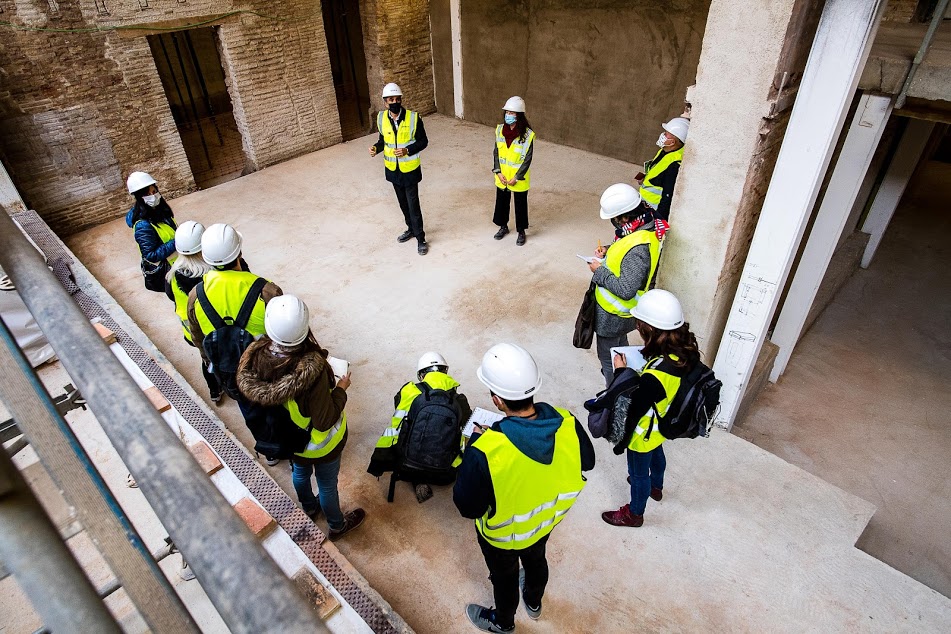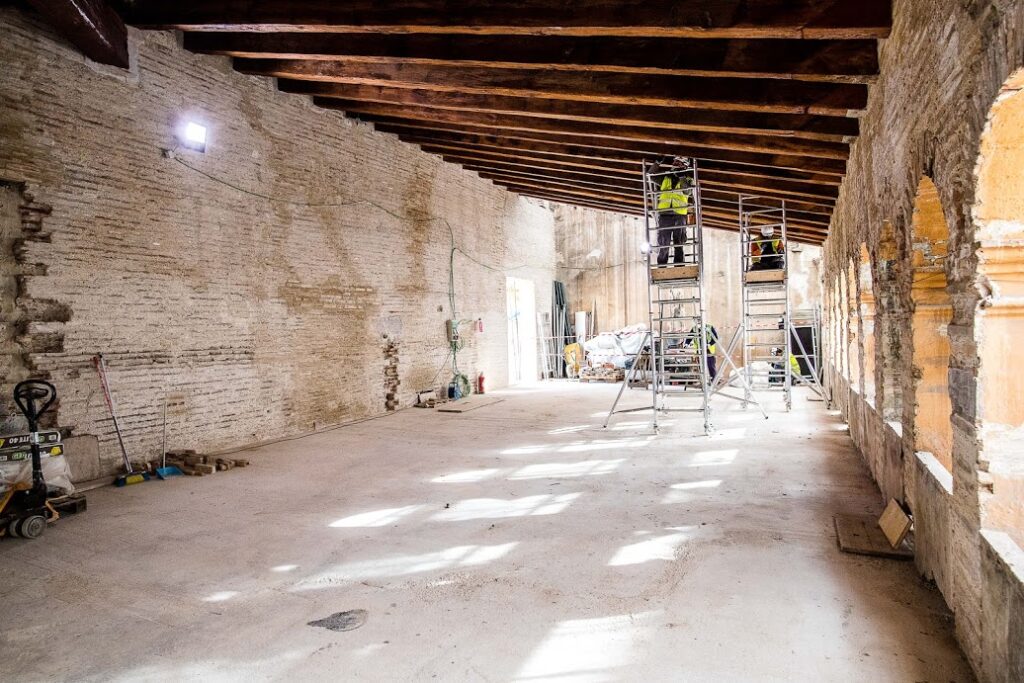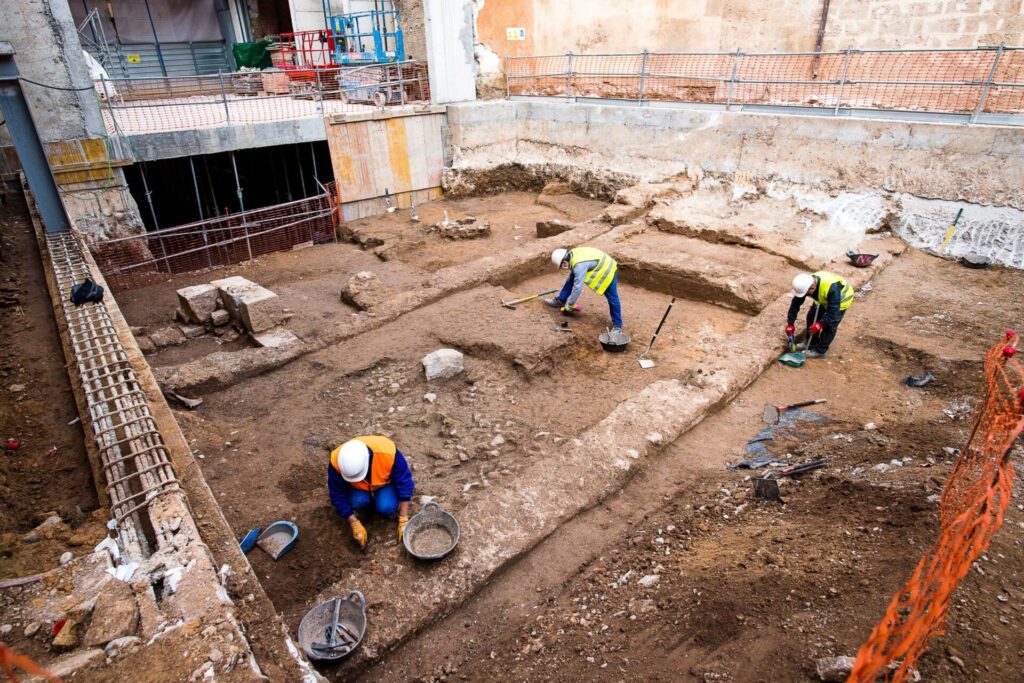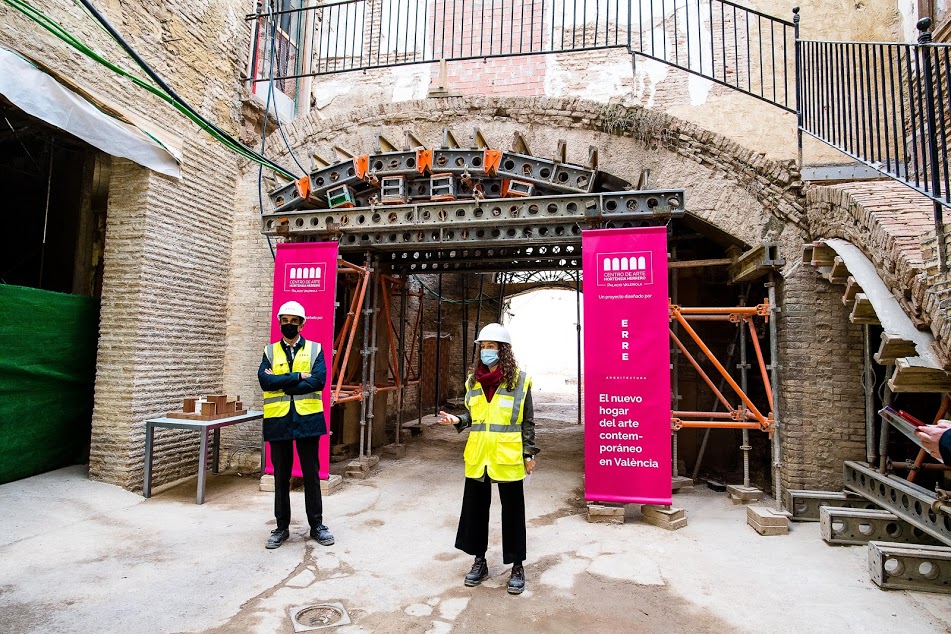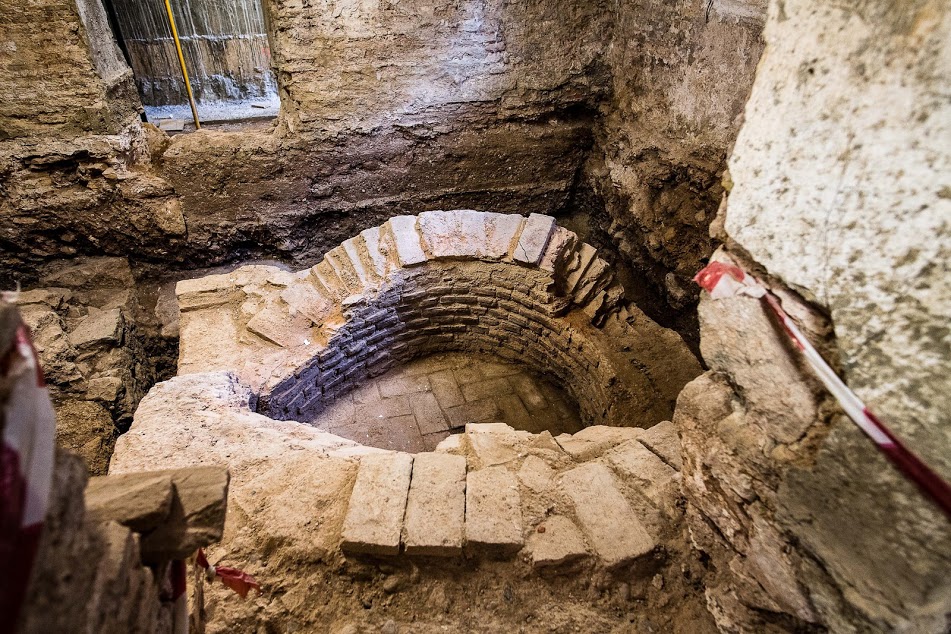6 minutes
The restoration began in 2018 and, once the foundations were completed, the work on the new structure and the reinforcement of the existing elements, both in the San Cristóbal building and within the footprint of the Palace, are now currently underway. The work will be completed in 2023, providing the city of Valencia with a flagship centre for contemporary art.
Table of contents
DIALOGUE BETWEEN PAST AND FUTURE
During the tour of the works, the architects responsible for the remodelling of the Valeriola palace explained that the façade will be restored to its condition when it was renovated in the early 19th century, the original cobblestone paving will be maintained and the unwanted modern elements that have been added in recent decades during the different phases of the use of the building will be eliminated.
In relation to the chapel within the building, the architect Jose Martí commented that “it will be restored and reconstructed, converting it into another room forming part of the future Hortensia Herrero Art Centre”. The street that was part of the old Jewish quarter is also being respected as a remnant of the past and an outdoor space. The garden is designed as another room in the museum, but outside, with the strong presence of vegetation and water. “It is a tribute to the Moorish courtyard that it once was,” he said.
The tour of the works continued in the loft, the most iconic space, which will retain its character with its arched windows and original wooden beam roof. Finally, the viewpoint is conceived as a stop along the museum route from which to contemplate the surroundings.
COMMITMENT TO TRADITIONAL CRAFTS AND TRADES
The restoration process is being carried out with the participation of “a group of craftspeople, professionals, technicians and archaeologists”, in the words of Jose Martí.
Se están rehabilitando las antiguas vigas de madera deterioradas por la humedad y los xilófagos utilizando innovadoras técnicas. The old wooden beams damaged by damp and woodworm are being restored using innovative techniques. In addition, the original ceramic tiles that cover the ceiling of the main hall and the monumental staircase that presides over the entrance to the building are being refurbished with the help of a specialist in traditional vaulted ceilings. The project will preserve the flooring that depicts a mythological scene featuring Perseus and Andromeda, which was part of the palace.
The artisans collaborating alongside the ERRE architectural studio also include a restorer who is surveying the façade to discover its original decoration, a goldsmith who will work on recovering the main entrance gate and a smith to restore the original balustrades and latticework that covered the windows. The intervention is approached from a ” conservationist and respectful” perspective, concluded Jose Martí.
ARCHAEOLOGICAL DISCOVERIES
The Hortensia Herrero Foundation has revealed for the first time the findings uncovered during the intervention. The most important of these were a late medieval oven and sections of the thick, five-metre-wide wall forming the western stand of the circus in the Roman city of Valentia, discovered in the courtyard and dated to around the first half of the 2nd century AD.
In recent months, the upper part of the skull of a horse has also been discovered, which could have formed part of a ritual act, the solitary grave of a young girl of about twelve years of age containing a perfume bottle that seems to date from the 3rd century AD, and ceramic remains from across all periods. To date, 22 burials have also been documented in the back courtyard of the palace in the former San Juan del Hospital cemetery.
The building will reflect the character of its historical legacy and the contemporary architecture with which it is being refurbished. The archaeological excavations uncovered during the works go some way to summarise “the history of the city: from Roman Valentia, the Muslim period, the medieval Jewish quarter and the splendour of the Silk Road in the 18th century”, according to Alejandra Silvestre, who emphasised the “complete coordination” between the museum project and the architectural project. A permanent dialogue to ensure that the new architectural complex responds to the needs of the artists, the curators, the works in the Hortensia Herrero collection and, of course, future visitors.
As a result, the Hortensia Herrero Foundation has reaffirmed its “firm commitment” to the Comunitat Valenciana and its citizens to make this iconic art centre a reality, thus joining the trend in other European cities, which have both public museums and private foundations supported by patrons.
